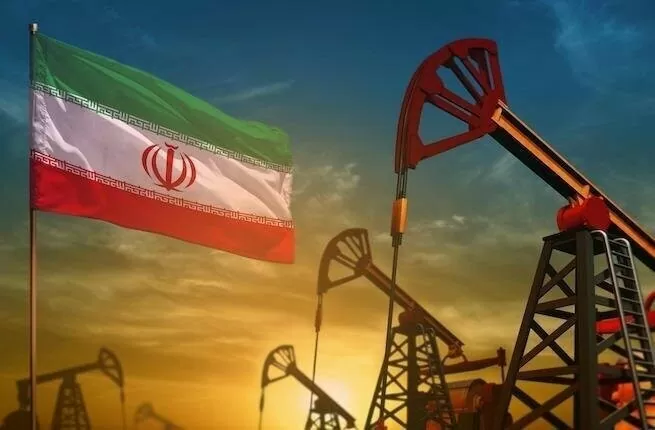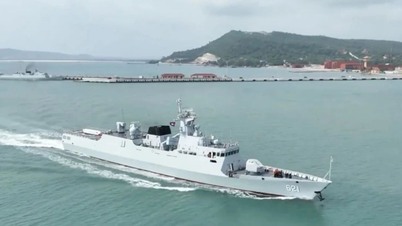As Iran’s economy continues to face many challenges, Mohammad Ali Dehghan Dehnavi, head of the Iran Trade Promotion Organization, has just announced that the country’s trade deficit reached $7 billion in the second half of this year, from March 21 to September 21, 2024. This is lower than last year’s record of $17 billion, showing that Iran’s trade situation continues to face difficulties.
According to Mr. Dehnavi, Iran’s total non-oil exports in the middle six months of the year reached $25.8 billion, while imports amounted to $32.5 billion. This reflects the imbalance between the two main trade flows due to the heavy dependence on a few countries. Specifically, 79% of Iran’s imports and 75% of its non-oil exports depend on just five countries, with China topping the list.
 |
| Iran's non-oil trade deficit is heavy - (Illustration photo) |
Iran last recorded a positive non-oil trade balance in 2018. The country’s trade deficit has ballooned in recent years, especially since the Ebrahim Raisi administration took office. To hide the growing foreign trade deficit, Iran’s customs service began including oil exports in its reports.
In addition to the trade deficit, a recent report by the Central Bank of Iran showed that more than $20 billion left Iran in the first nine months of 2023, setting a record for capital outflows. The government has since stopped publishing capital-related data and blocked access to it, making the Central Bank’s website unavailable outside the country, a move that has raised concerns about the transparency of the Islamic Republic’s financial management.
In addition to non-oil trade issues, the oil sector – which is the backbone of Iran’s economy – is also facing difficulties. Tanker tracking companies reported that Iran’s daily oil exports have dropped by 400,000 barrels in the past two months compared to previous months. In particular, in the first 10 days of October, Iran reduced its oil exports by 70%, to just 600,000 barrels per day. This move is believed to be to avoid the risk of retaliatory attacks from Israel, following tense events in the region.
In addition, Iran’s oil revenues are expected to decline significantly in the second half of this fiscal year (September 22, 2024 to March 20, 2025). This poses a major challenge to the Iranian economy as the country is under pressure from both inside and outside.
Iran’s over-reliance on a small number of partner countries is also a worrying factor for the Iranian economy. According to Dehnavi, 95% of Iran’s oil exports currently go to the Chinese market, while the rest is sold to Syria. This puts Iran at high risk of any fluctuations in its partners.
With a continuing non-oil trade deficit and a sharp decline in oil exports, Iran is facing unprecedented difficulties. Its dependence on major countries such as China and lack of transparency in financial reporting add to the instability. According to some, the Iranian government needs to find long-term solutions to rebalance trade and maintain economic stability in the future.
https://iranfocus.com/economy/52329-irans-7-billion-trade-deficit-and-dependence-on-a-handful-of-countries/
Source: https://congthuong.vn/thuong-mai-phi-dau-mo-iran-tham-hut-nang-nen-kinh-te-phu-thuoc-vao-nuoc-ngoai-352500.html


![[Photo] President Luong Cuong presents the 40-year Party membership badge to Chief of the Office of the President Le Khanh Hai](https://vphoto.vietnam.vn/thumb/1200x675/vietnam/resource/IMAGE/2025/5/19/a22bc55dd7bf4a2ab7e3958d32282c15)

![[Photo] Close-up of Tang Long Bridge, Thu Duc City after repairing rutting](https://vphoto.vietnam.vn/thumb/1200x675/vietnam/resource/IMAGE/2025/5/19/086736d9d11f43198f5bd8d78df9bd41)

![[Photo] General Secretary To Lam attends the conference to review 10 years of implementing Directive No. 05 of the Politburo and evaluate the results of implementing Regulation No. 09 of the Central Public Security Party Committee.](https://vphoto.vietnam.vn/thumb/1200x675/vietnam/resource/IMAGE/2025/5/19/2f44458c655a4403acd7929dbbfa5039)
![[Photo] Panorama of the Opening Ceremony of the 43rd Nhan Dan Newspaper National Table Tennis Championship](https://vphoto.vietnam.vn/thumb/1200x675/vietnam/resource/IMAGE/2025/5/19/5e22950340b941309280448198bcf1d9)




![[Photo] Explore the Great Wall of Water in the Suburbs of Beijing, China](https://vphoto.vietnam.vn/thumb/402x226/vietnam/resource/IMAGE/2025/5/5/c2e706533d824a329167c84669e581a0)



























![[Photo] Prime Minister Pham Minh Chinh inspects the progress of the National Exhibition and Fair Center project](https://vphoto.vietnam.vn/thumb/1200x675/vietnam/resource/IMAGE/2025/5/19/35189ac8807140d897ad2b7d2583fbae)























































![[VIDEO] - Enhancing the value of Quang Nam OCOP products through trade connections](https://vphoto.vietnam.vn/thumb/402x226/vietnam/resource/IMAGE/2025/5/17/5be5b5fff1f14914986fad159097a677)



Comment (0)